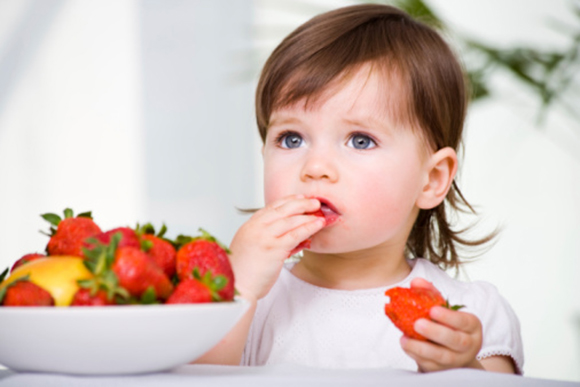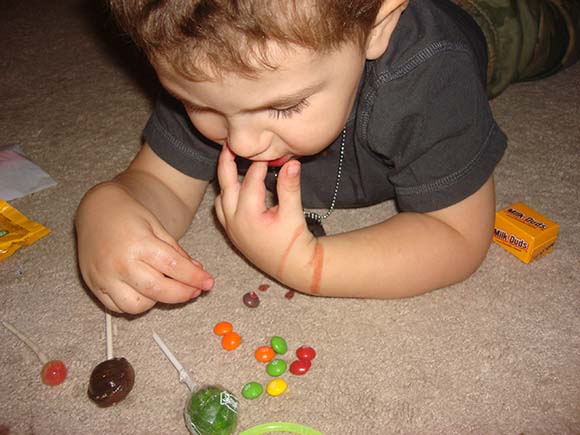
Did you know that choking is a leading cause of injury among children, some of which are very serious, especially among children below 4 years of age?
This is according to researchers from Nationwide Children’s Hospital in Columbus, Ohio. According to the results of their study:
During the nine-year study period, more than 12,000 children were treated each year in U.S. emergency departments for injuries from choking on food, which equals 34 children each day.
The researchers found that:
Kids under age 4 accounted for 62% of all non-fatal food-related chokings; kids under age 1 accounted for 38%.
In a policy statement, the American Academy of Pediatrics (AAP) released a more serious statistic on the dangers of food choking, which parents should be aware of:
On average, a child will die every 5 days in the United States from choking on food.
So now we know why our parents have taught us since we were little kids to always eat slowly and to chew our food properly. Aside from the fact that it’s good manners, it’s a safety precaution as well.
Unfortunately, some of the most common food items that children love to eat are choking hazards.
Here are the top 7 commonly eaten food items that are choking hazards to your child based on a study of emergency room (ER) cases:
Surprisingly, seeds and nuts — though small — have been known to cause choking when kids place a handful in their mouths.
7. Seeds, nuts, or shells – 6.5% of food choking ER visits. Although these food items are small, don’t let their size deceive you. The researchers noted that children consume these by the handful, which can result to choking.

Infants and babies need to drink this everyday to develop and grow.
Unfortunately, milk has been found to cause choking among babies so keep a close eye on them when feeding.
6. Formula, milk, or breast milk – 6.7% of food choking ER visits. While the study found that kids who choked on milk were older, babies were also found to have choked on milk and were admitted to ER. Keep a close watch on your child when they drink their milk.

Kids love these as they are sweet and almost always served fresh.
Make sure to cut fruits and vegetables into really small pieces when serving them to little kids.
5. Fruits and vegetables – 9.7% of food choking ER visits. Certain food items that fall in this category such as whole grapes and raw carrots share the same high-risk physical characteristics that create effective plugs in children’s airways. To be safe, make sure to slice and cut fruits and vegetables into little pieces before giving them to your child.

Chicken, meat, and fish have these. However, sometimes we may miss removing them when serving them to little kids.
Make sure to double-check and remove those little bones when serving meat, chicken, and fish to little kids.
4. Bone – 12% of food choking ER visits. While we pretty much watch out for bones when eating fish and meat, little children do not normally pay attention to these. Make sure to remove bones from food items until such time when your little child is old enough to be aware of these.

This common source of protein is good for little kids for muscle development. However, it is by far one of the three known causes of choking.
Make sure to cut up meat into little pieces when serving these to little kids.
3. Meat, not including hot dogs – 12.2% of food choking ER visits. Make sure to serve your little ones small, cut pieces until such time that they can really chew them properly. Always encourage them to chew meat items well before swallowing.

There is no doubt kids love things that are sugary and sweet. It’s not really good for their teeth. However, we tend to still give them this as a treat.
Gummy candies and other types of candies really need to be cut in smaller sizes when served to little kids as these types of candies have been known for years to result to kids choking, with some being fatal.
2. Other types of candy and gum – 12.8% of food choking ER visits. Candies are not really essential food items. However, children do manage to get their hands on them. Make sure gummy candies are cut into smaller pieces as gummy candies have been know to choke kids. Better yet, avoid giving them any if you can help it.

On the next page is the no. 1 cause of choking in kids. Here’s a clue: It’s also very sugary and something dentists have always warned parents about as a leading cause of cavities in children’s teeth.
Please be very careful in giving your kids hard candies as this is the no. 1 cause of choking among little kids. If you can avoid it, please do avoid it. Your family dentist will appreciate it too.
1. Hard candy – 15% of food choking ER visits. Kids just love hard candies no matter how much we tell them not to have any. If ever you give them hard candies, make sure to educate your little one to chew them into little pieces before swallowing. Of course, the better option is not to give them any until such time that they really know how to eat one. Other parents would say, just don’t give them any. Period. Your dentist will no doubt wholeheartedly approve of this.

It may not be that easy to stop your kids from eating the various foods on the list, but you should definitely keep a watchful eye on them. It’s important to note that when kids choke, they cannot scream for help. The most they can do is cough but that may not be loud enough for you to hear. If you’re not close by, you won’t be able to recognize that they’re choking.
Although there is a universal sign for choking, mom should be able to look out for more signs in case their kid is choking. Coughing and grasping for air are the most common signs.
For immediate First Aid, mayoclinic.org recommends the “five-and-five” approach. You can give 5 back blows or 5 abdominal thrusts. You can also alternate the two. Keep in mind that even if you have dislodged the obstruction, you should still rush your kid to the emergency room to be more on the safe side.
As much as it can be fatal, choking can also be prevented. The American Academy of Pediatrics suggests the following:
- Keep foods such as grapes, hot dogs, raw carrots, or peanuts away from babies and young children.
- Cut food for babies and young children into pieces no larger than one-half inch.
- Encourage children to chew food well.
- Supervise meal times.
- Insist that children sit down while eating. Children should never run, walk, play, or lie down with food in their mouths.
- Be aware of older children’s actions. Many choking incidents are caused when an older child gives a dangerous toy or food to a younger child.
The list presented in this article is just a partial list of food items that can be choking hazards to your child. If you want to see the full list, you can check out this awesome article on HuffingtonPost.com. This very informative article gives you more than enough reasons to carefully watch the food your child eats.
Which food items in this list has your child had a close call with choking?









